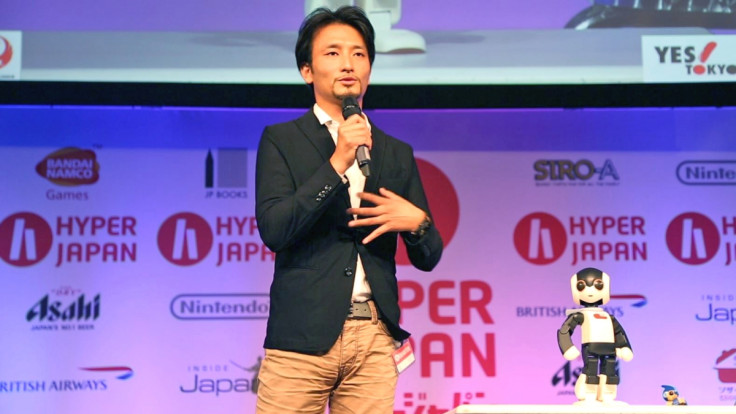Robots Will Be the Next Smartphones, Says Japanese Inventor

When you think about robots and Japan, you're likely to imagine large, incredibly life-like androids that emulate humans in every way, or shiny metallic mechanical butlers that fulfil your every whim.
But what if robots were instead made from plastic, fitted into your pocket or backpack, and were able to take the place of your smartphone or tablet? This is the future that professor Tomotaka Takahashi, the CEO of Robo Garage, dreams about.
Alongside his work as a robotics scientist researching the use of robots in communication at the University of Tokyo, Takahashi has invented almost 40 different types of robots since he began researching them in 1999.
"It started as my fun personal hobby, but now it has become a business. Some of my robots are art, designed to showcase the future possibilities of having robots live with us, but other robots have become products for regular consumers," Takahashi told IBTimes UK at the Hyper Japan event in London.
Robi
One of his robots, Robi, a 34cm-tall gadget that resembles manga/film character Astro Boy, can understand over 200 commands, such as requests for it to dance, sing, do push-ups or even remotely control a TV.
The robot comes with voice recognition technology and has a set vocabulary that enables it to respond to questions posed to it or to reply correctly in social situations, such as "No problem," when someone says, "thank you".
Comprising of 20 motorised parts, Robi is sold to robot enthusiasts as a weekly subscription magazine model kit. Consumers have to purchase all 70 issues in order to slowly put the robot together by themselves.
According to partwork publisher De Agostini UK, the total cost of the robot comes to £895.30. Over 100,000 units of the product been sold so far in Japan and over 30% of the collectors are female.
Takahashi does not think that robot butlers who can do every single task will be feasible, but supports the theory posed by some in the robotics industry that humans will one day have a collection of different robots which each specialise in completing a specific task.
In addition to Robi, last year the Japanese Aerospace Exploration Agency (JAXA), sent another of Takahashi's creations, Kirobo, to the International Space Station to conduct a communications experiment with Japanese astronauts.
Not machines or humans
"I don't see robots as being machines or human beings, but something in between, something cute and useful. The next generation of robots will be used as an information device like a smartphone. Smartphones already remotely control appliances and interface between humans and information," says Takahashi.
"Smartphones already have voice recognition technology but it is not used much as people are not comfortable talking to a grey black box. If it had a human shape, we would be willing to talk to it.
"In five years, robots will be as small as smartphones, becoming like a Tinker Bell or Jiminy Cricket that you can put in your pocket.
"Smartphone growth is now slowing down and people want to find something to be the next smartphone. I am now designing a robot to be the next communication device. It will be able to talk like a phone. It can move, but it will also have a touch screen and act like a small computer."
© Copyright IBTimes 2025. All rights reserved.






















